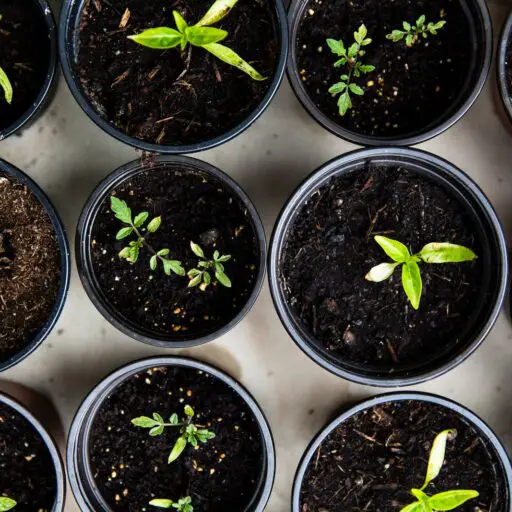Support our educational content for free when you purchase through links on our site. Learn more

Have you ever wandered past a school garden and wondered who keeps those vibrant plants thriving? 🤔 You’re not alone! The answer is more complex than you might think. In our comprehensive guide, we dive deep into the world of school gardens, exploring the myriad of individuals who contribute to their success. From teachers and students to enthusiastic parents and community volunteers, each plays a vital role in nurturing these green spaces.
Imagine a classroom where students are not just learning about plants from a textbook but actually digging their hands into the soil, planting seeds, and watching them grow! 🌼 That’s the magic of school gardens – they transform education into a hands-on experience. Did you know that children involved in school gardening programs are more likely to consume fruits and vegetables? Talk about a win-win for health and learning!
In this article, we’ll break down the responsibilities of each caretaker, share tips on organizing a gardening team, and highlight the incredible benefits that come from cultivating these outdoor classrooms.
Key Takeaways
- Diverse Roles: School gardens thrive on the contributions of teachers, students, parents, and community members.
- Hands-On Learning: Engaging with a garden enhances academic performance and promotes healthy eating habits.
- Teamwork is Key: Clear communication and a structured plan are essential for effective garden maintenance.
- Community Involvement: Local businesses and organizations can provide invaluable support, resources, and expertise.
- Sustainable Practices: Implementing eco-friendly gardening techniques fosters environmental stewardship among students.
Ready to dig deeper into the world of school gardening? 🌍 Check out essential gardening tools like Garden Trowels and Kids Gardening Gloves to help your school garden flourish!
Table of Contents
- Quick Tips and Facts for School Gardens 🌱
- Who’s Responsible? Understanding School Garden Caretakers 🧑🌾
- The Importance of School Gardens in Education 📚
- Roles and Responsibilities of School Garden Caretakers 🛠️
- How to Organize a School Gardening Team 🤝
- Essential Tools and Supplies for School Gardens 🧰
- Engaging Students in Garden Care: Tips and Tricks 🌍
- Community Involvement: Who Else Can Help? 🏡
- Sustainable Practices for School Gardens ♻️
- Challenges in School Garden Maintenance and Solutions ⚠️
- Success Stories: Inspiring School Garden Programs 🌟
- Conclusion: Cultivating a Greener Future 🌿
- Recommended Links for Further Reading 📖
- FAQ: Your School Garden Questions Answered ❓
- Reference Links for School Garden Resources 🔗
Quick Tips and Facts for School Gardens 🌱
We get it – you’re passionate about school gardens! You envision vibrant green spaces bursting with life, buzzing with curious learners, and overflowing with fresh, healthy food. But the question always pops up: “Who takes care of the school garden?” 🤔 Especially during those long summer months?
Don’t worry, we’ve got you covered! Here are some quick tips and fun facts to get you started:
- Start small, dream big! You don’t need acres of land to make a difference. A few raised beds or even container gardens can spark a love for nature and learning.
- Get the whole school involved! Unleashing the Power of School Community Gardens: 15 Transformative Benefits You Can’t Ignore! 🌱 2024. From students and teachers to parents and community members, everyone can contribute. Imagine a bake sale with garden-fresh ingredients – yum! 😋
- Think outside the plot (literally!). Vertical gardens, herb spirals, and even pollinator-friendly borders can transform unused spaces into thriving ecosystems.
- Don’t be afraid to get your hands dirty! Gardening is a sensory experience. Encourage children to touch, smell, and taste (when safe) to truly connect with nature.
- Celebrate successes, big and small! Whether it’s a bumper crop of carrots or a single blooming sunflower, every milestone deserves recognition. 🎉
Fact: Did you know that studies show that children who participate in school gardening programs eat more fruits and vegetables? 🍎🥕 That’s a win for healthy habits and happy taste buds!
Who’s Responsible? Understanding School Garden Caretakers 🧑🌾
Ah, the million-dollar question! The answer, like a good compost, is multifaceted. 😉 A thriving school garden thrives on shared responsibility. Here’s a glimpse into the potential caretakers:
1. Dedicated Teachers and Staff: The Garden Champions
These passionate educators go above and beyond to integrate the garden into their curriculum and inspire a love for nature in their students. They’re the ones with muddy shoes and a twinkle in their eye when they talk about the garden’s latest harvest. 🍅
2. Enthusiastic Students: The Future Garden Gurus
Students are the heart and soul of any school garden! From planting seeds to harvesting veggies, they learn valuable life skills, responsibility, and a deeper appreciation for where their food comes from.
3. Supportive Parents and Families: The Garden Boosters
Parents can play a vital role by volunteering their time, donating supplies, and even sharing their gardening expertise. They’re the backbone of many successful school garden programs.
4. The Wider Community: The Garden Allies
Local businesses, community organizations, and even retired gardeners can contribute their resources, skills, and enthusiasm to create a truly sustainable garden ecosystem.
Remember: Clear communication and a well-structured plan are crucial for a well-maintained school garden. More on that in the next section! 😉
The Importance of School Gardens in Education 📚
School gardens are more than just pretty patches of green; they’re outdoor classrooms brimming with learning opportunities! Here’s why they’re so essential:
1. Hands-on Learning Across Subjects
From science and math to language arts and social studies, the garden becomes a living laboratory for cross-curricular exploration. Imagine calculating the area of a raised bed, writing poems inspired by a blooming flower, or learning about different cultures through their traditional crops!
2. Developing Life Skills and Responsibility
Planting, weeding, watering – these tasks teach children valuable life skills, patience, and the importance of caring for living things. Plus, there’s nothing quite like the satisfaction of harvesting your own food!
3. Promoting Healthy Eating Habits
Exposure to fresh fruits and vegetables and the process of growing them can encourage children to make healthier food choices. Who knows, they might even start requesting more salads at home! 😉
4. Fostering Environmental Stewardship
School gardens provide a tangible connection to nature, helping children understand the importance of biodiversity, sustainability, and protecting our planet.
Quote: “Children who garden are more likely to eat fruits and vegetables and to show an interest in how their food is grown,” says KidsGardening.org.
Roles and Responsibilities of School Garden Caretakers 🛠️
Now that we know who might be involved, let’s define what they can do. Remember, a well-organized team is key to a flourishing garden!
| Role | Responsibilities |
|---|---|
| Garden Coordinator (Teacher or Parent) | Oversees overall garden planning and maintenance, communicates with volunteers, manages supplies and budget, ensures safety guidelines are followed. |
| Teachers | Integrate garden-based lessons into curriculum, supervise students during garden activities, promote garden activities to parents. |
| Students | Participate in planting, weeding, watering, harvesting, and other garden tasks, learn about plant science and ecology, share their garden knowledge with others. |
| Parent Volunteers | Assist with garden maintenance tasks, organize fundraising events, donate supplies, share gardening expertise. |
| Community Partners | Provide financial or in-kind donations, offer workshops or educational programs, connect the garden with local resources. |
Tip: Create a shared online calendar or signup sheet to coordinate tasks and avoid scheduling conflicts.
Stay tuned! In the next section, we’ll explore practical tips for organizing your school gardening team.
How to Organize a School Gardening Team 🤝
Organizing a school gardening team can feel like herding cats, but don’t fret! With a bit of planning, you can create a cohesive and enthusiastic group. Here are some steps to get you started:
-
Define Roles Clearly: Use the table above to assign specific responsibilities. Everyone should know what’s expected of them!
-
Set Regular Meetings: Schedule consistent check-ins to discuss progress, address challenges, and celebrate successes. This keeps everyone engaged and informed!
-
Create a Communication Channel: Utilize group chats, emails, or platforms like Slack to keep everyone in the loop.
-
Plan Events: Organize fun events like planting days, harvest festivals, or community potlucks to foster camaraderie and excitement around the garden.
-
Encourage Feedback: Regularly ask for input from team members. This not only improves the garden but also makes everyone feel valued.
-
Celebrate Achievements: Recognize both individual and team efforts. A simple shout-out in a meeting or a small reward can go a long way in boosting morale! 🎉
Essential Tools and Supplies for School Gardens 🧰
Every great gardener knows that the right tools make all the difference! Here’s a list of essential tools and supplies for your school garden:
| Tool/Supply | Purpose |
|---|---|
| Garden Trowel | Perfect for digging, planting, and transferring soil. |
| Kids Gardening Gloves | Protect little hands while they dig in the dirt. |
| Watering Can | Essential for keeping plants hydrated. |
| Rakes and Hoes | Useful for clearing debris and preparing soil. |
| Compost Bin | Great for teaching students about recycling and soil health. |
| Raised Garden Beds | Ideal for managing soil quality and accessibility. |
Pro Tip: Consider using tools that are kid-friendly and safe for younger gardeners. Brands like Fiskars and Kid’s Garden Tools offer great options!
Engaging Students in Garden Care: Tips and Tricks 🌍
Keeping students engaged in garden care can be a challenge, but it’s essential for the garden’s success! Here are some fun ways to involve them:
- Incorporate Gardening into Lessons: Use the garden as a living lab for science experiments, math calculations, and even art projects.
- Create a Garden Club: Offer a weekly or monthly club where students can meet to work on garden projects and learn about different plants.
- Host Competitions: Organize friendly competitions like “Biggest Tomato” or “Best Garden Design” to spark excitement.
- Field Trips: Plan visits to local farms or botanical gardens to inspire students and show them the bigger picture of gardening.
- Use Technology: Encourage students to document their gardening journey through photos or videos to share with the school community.
Community Involvement: Who Else Can Help? 🏡
When it comes to school gardens, the more, the merrier! Here are some ways to involve the community:
- Local Businesses: Partner with local nurseries or garden centers for discounts on supplies or donations of plants.
- Master Gardeners: Reach out to local gardening clubs or master gardener programs for workshops and expert advice.
- Community Events: Host events that invite community members to participate, such as garden open days or harvest festivals.
- Grants and Sponsorships: Look for local grants or sponsorships from businesses that support educational initiatives.
Sustainable Practices for School Gardens ♻️
Sustainability is key in any garden! Here are some eco-friendly practices to implement:
- Composting: Teach students about composting food scraps to create nutrient-rich soil for the garden.
- Native Plants: Use plants that are native to your area, as they require less water and are better for local wildlife.
- Rainwater Harvesting: Set up a rain barrel to collect water for irrigation, teaching students about water conservation.
- Organic Gardening: Avoid chemicals and pesticides, opting for natural pest control methods instead.
Challenges in School Garden Maintenance and Solutions ⚠️
Every garden faces challenges, but with the right strategies, you can overcome them! Here are common issues and solutions:
| Challenge | Solution |
|---|---|
| Summer Maintenance | Organize a volunteer schedule or enlist community members to help during breaks. |
| Pest Control | Implement companion planting and natural repellents to manage pests organically. |
| Funding | Host fundraising events or apply for grants to secure necessary resources. |
| Student Turnover | Create a mentorship program where older students teach younger ones about gardening. |
Success Stories: Inspiring School Garden Programs 🌟
Let’s highlight some incredible school garden initiatives that have made a difference:
- The Edible Schoolyard Project: Founded by chef Alice Waters, this program integrates gardens into school curricula, teaching children about healthy eating and sustainability.
- Green Our Planet: This nonprofit partners with schools to create gardens and teaches students about agriculture and nutrition.
- School Garden Network: A resource hub that connects schools with local gardens, providing support and inspiration for successful programs.
Conclusion: Cultivating a Greener Future 🌿

In conclusion, school gardens are a treasure trove of learning, community engagement, and environmental stewardship. They thrive through the collective efforts of dedicated teachers, enthusiastic students, supportive parents, and community partners. By understanding who takes care of these vibrant spaces and what roles they play, you can create a flourishing garden that benefits everyone involved.
Positives:
- Hands-on learning opportunities across multiple subjects.
- Development of life skills and responsibility in children.
- Promotion of healthy eating habits and environmental awareness.
Negatives:
- Maintenance challenges during summer breaks.
- Need for consistent volunteer support, which can sometimes wane.
Overall, we confidently recommend establishing or enhancing a school garden in your community. It’s an investment in the future of our children and our planet! 🌍✨
Recommended Links for Further Reading 📖
-
Books on School Gardening:
- “The School Garden Curriculum: An Integrated Approach to Learning” – Shop on Amazon
- “Gardening with Children: A Guide to Growing Plants and Food” – Shop on Amazon
-
Essential Gardening Tools:
- Garden Trowel: Shop on Amazon
- Kids Gardening Gloves: Shop on Amazon
FAQ: Your School Garden Questions Answered ❓

How do you maintain a school garden?
Maintaining a school garden involves regular tasks such as watering, weeding, planting, and harvesting. Establish a schedule for these activities, and encourage students to take ownership of specific tasks. It’s also important to monitor plant health and address any pest issues promptly. Using organic mulch can help retain moisture and suppress weeds, making maintenance easier. 🌾
Who takes care of the garden?
Care for the garden is typically a shared responsibility among teachers, students, parent volunteers, and community members. Each group can contribute based on their availability and expertise, ensuring that the garden remains vibrant and productive throughout the school year.
Read more about “Unlocking the Secrets of Community Gardening: 20 Benefits You Can’t Ignore! 🌱 …”
What is a garden caretaker called?
A garden caretaker may be referred to as a gardener. This term encompasses anyone who tends to a garden, whether they are volunteers, professionals, or hobbyists. For a deeper understanding of the term, check out the Gardener – Definition, Meaning & Synonyms – Vocabulary.com.
What is the name of a person who takes care of plants?
A person who takes care of plants is commonly known as a gardener. This role can range from casual hobbyists tending to their home gardens to professional horticulturists managing larger landscapes.
Read more about “Where Would You Start a Garden in Your Community? 10 Essential Tips for 2024! 🌱”
What are the benefits of having a school garden?
School gardens provide numerous benefits, including improved student engagement, enhanced academic performance, and increased consumption of fruits and vegetables. They also foster teamwork, responsibility, and a sense of community among students, parents, and educators. 🌱
Read more about “🌱 15 Steps to Starting a Community Garden: Your Guide to Growing Together in 2024”
How can we encourage students to participate in garden care?
To encourage student participation, make gardening activities fun and engaging! Incorporate games, competitions, and hands-on lessons that allow students to explore and learn. Recognizing their efforts with rewards, such as certificates or the chance to harvest produce, can also motivate them to stay involved.
Reference Links for Verification 🔗
- KidsGardening.org
- American Community Gardening Association
- The National Gardening Association
- Gardener – Definition, Meaning & Synonyms – Vocabulary.com
By tapping into the power of school gardens, we can cultivate not just plants, but also a brighter, greener future for generations to come! Happy gardening! 🌼🌿


